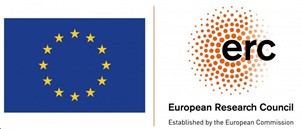Engineering in the Landscape: Geometry, Symmetries and Anomalies
Å80127
Uppsala Universitet
Scope:
String theory has provided deep insights on the nature of symmetries, anomalies and the UV completion of effective field theories. In string theory, all these aspects are tied to geometry, and may be understood to a remarkable degree in terms of geometric concepts such as singularities and moduli spaces. In recent years, this geometric approach has led to vast progress: Symmetries have been systematically extended to higher groups, anomalies have been reformulated via bordism theory, and there is a budding understanding on how the landscape of consistent (super)gravity theories is fenced off from the swampland of inconsistent low-energy theories. These rapid developments engage a growing number of researchers with different backgrounds.
Workshop description:
The goal of this workshop is to bring together experts in geometric engineering of quantum field theories, researchers of generalised higher form symmetries, developers of formal aspects of string compactifications and compact geometries, and protagonists of the Swampland program. Through a focused program that blends topical seminars with ample time for discussions and interactions, we hope to facilitate communication and exchange of ideas to further accelerate the progress in the respective fields, and build new cross-field collaborations.
Confirmed conference speakers
- Michele del Zotto (Uppsala University)
- Markus Dierigl (LMU Munich)
- Iñaki García Etxebarria (Durham University)
- Craig Lawrie (DESY Hamburg)
- Miguel Montero (Harvard University)
- Thorsten Schimannek (Sorbonne University)
- Marieke van Beest (University of Oxford)
Venue:
The workshop is hosted by the Department of Physics and Astronomy at Uppsala University. The scientific program will take place in the Ångströmlaboratoriet located in walking distance from the city center. See further information by clicking the link in the sidebar.
Sponsors:
- Uppsala-Durham Seedcorn Fund
- This workshop is co-funded by the ERC project MEMO

Agnese Bissi
Alessandro Contini
Andrea Grossutti
Andrea Manenti
Andreas Braun
Craig Lawrie
Daniel Panizo Pérez
Davide De Biasio
Dmytro Volin
Elias Riedel Gårding
Iñaki García Etxebarria
Jacopo Sisti
Johan Henriksson
Luca Cassia
Magdalena Larfors
Marieke van Beest
Markus Dierigl
Matthew Magill
Michele del Zotto
Miguel Montero
Muyang Liu
Paul-Konstantin Oehlmann
Richie Dadhley
Robert Moscrop
Rodolfo Panerai
Roman Mauch
Shani Nadir Meynet
Simon Ekhammar
Thorsten SCHIMANNEK
Vladimir Bashmakov
